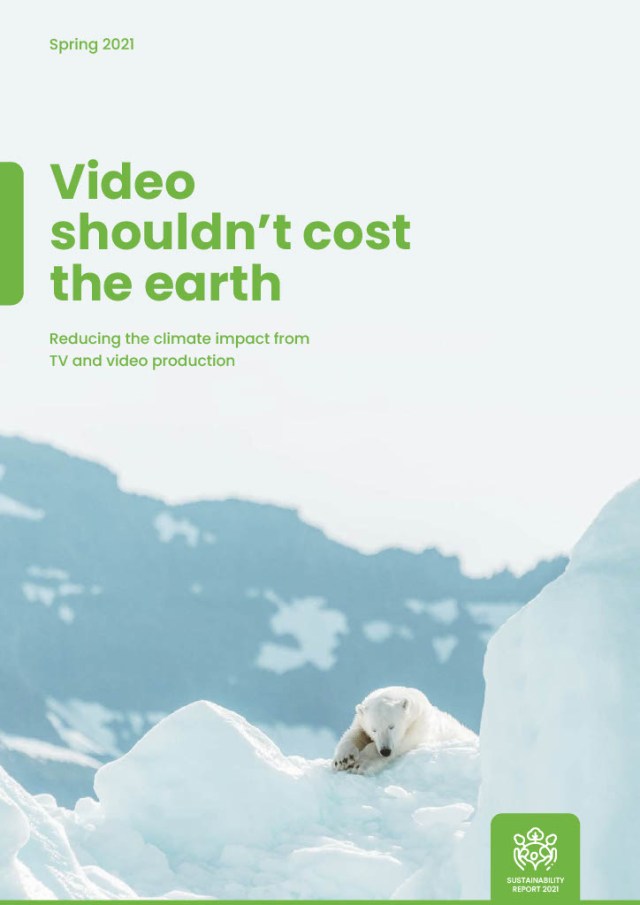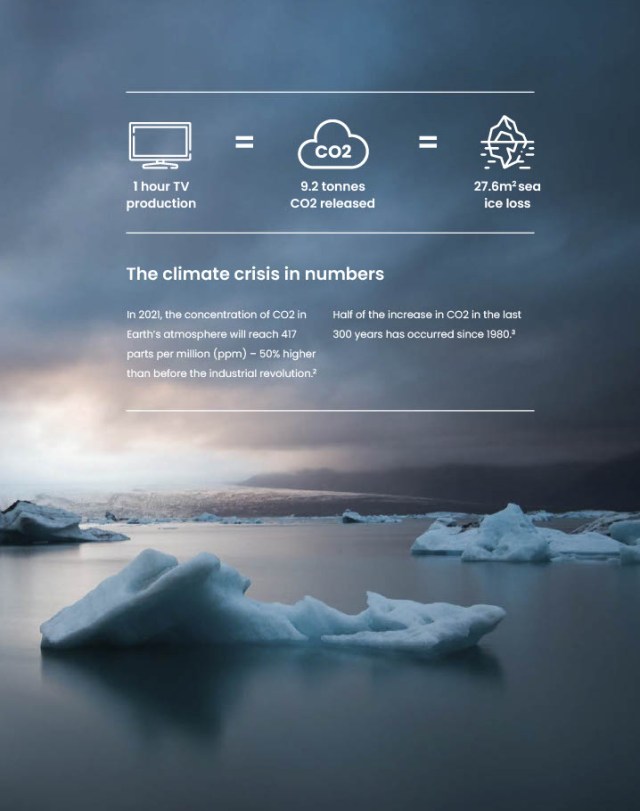Albert, the BAFTA-backed environmental organization, has broken the [climate] impact down. It estimates that every hour of TV production generates 9.2 tons of CO2 and each ton of CO2 results in the loss of 3m2 of sea ice. Multiply that by hundreds of thousands of hours of TV production every year worldwide. Add in the explosion in video streaming, and the power required to support it, and it’s clear that the industry has a substantial and growing climate impact.
Source: “Video Shouldn’t Cost the Earth: Reducing the Climate Impact from TV and Video Production“
AT A GLANCE:
The recently-released report, part of an initiative by the cloud video editing and publishing platform Blackbird and environmental British management consultancy Green Element, describes the carbon footprint of TV production in frightening terms. The report breaks down the reasons for this based on the energy needed to power streaming, the power to all the devices used by consumers to view content and the power needed by delivery networks and data centers supporting the streaming.
It also reports on power used in production to sustain buildings and locations, transportation, on-site equipment and trucks, physical infrastructure, network infrastructure (specifically servers and storage), data centers, virtual servers and processors, much of which continues to expand with increasing bandwidth requirements from content providers and expectations from viewers.
Some leading production, broadcast, and streaming companies have announced plans to cut back on their environmental impact. The BBC released a white paper that focusses on particular areas of concern, saying, identifying “home networking equipment and set-top boxes as key hotspots in the system. We also show that though streaming is similar in impact to cable and satellite, this is due to smaller viewing devices – meaning the networking equipment in and beyond the home has a higher impact than the end device.”
Amazon, an enormous streaming platform and host to a significant amount of other content providers’ streaming services has pledged $2 billion towards sustainability initiatives and has vowed that it will “reach 100% renewable energy in its operations by 2025. Apple, Google, Microsoft, and Facebook have all made similar commitments.
Not too surprisingly, Blackbird — seen here in action — takes a position that the use of their platform will contribute to production companies’ movement towards sustainability. In its coverage of the report, Streaming Media speculates “Though the report doesn’t name them, the findings of this report seem to condemn Avid and Adobe (combined with PCoIP solutions like Teradici) remote editing systems, while giving a big tick to Blackbird.”
Regardless of whether or not the report inspires content creators and providers to swap out their current editing and publishing infrastructure, the information provided does make for an interesting, and sometimes startling, read.







